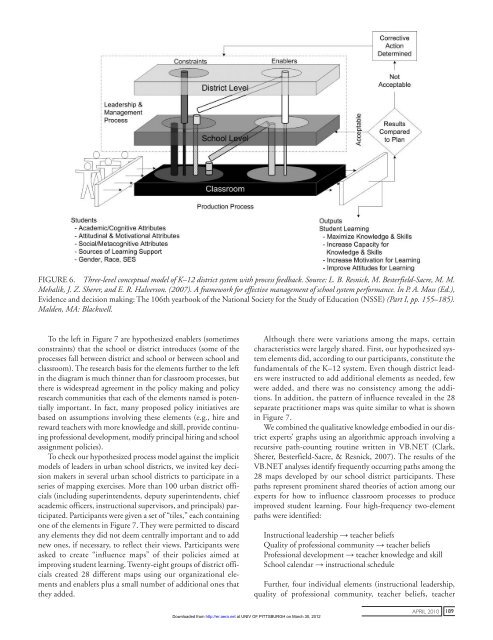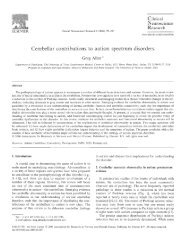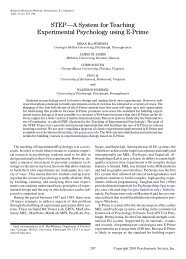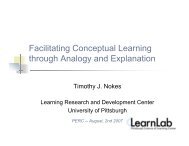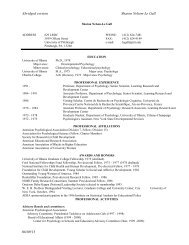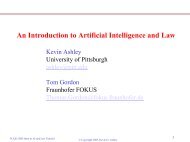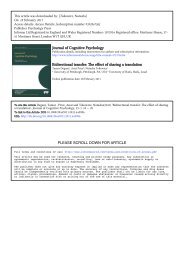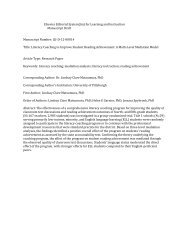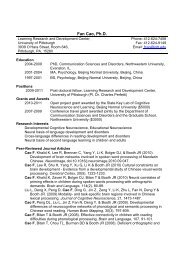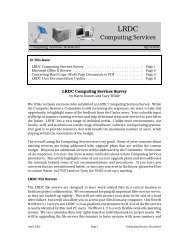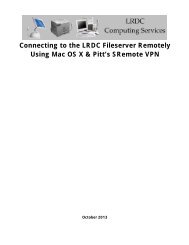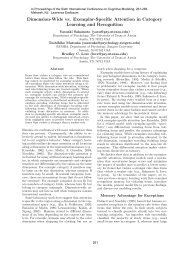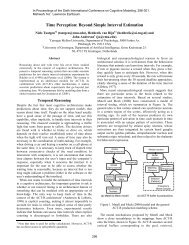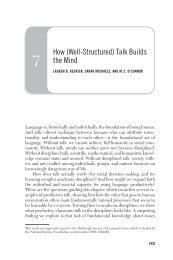Nested Learning Systems for the Thinking Curriculum
Nested Learning Systems for the Thinking Curriculum
Nested Learning Systems for the Thinking Curriculum
Create successful ePaper yourself
Turn your PDF publications into a flip-book with our unique Google optimized e-Paper software.
FIGURE 6. Three-level conceptual model of K–12 district system with process feedback. Source: L. B. Resnick, M. Besterfield-Sacre, M. M.Mehalik, J. Z. Sherer, and E. R. Halverson. (2007). A framework <strong>for</strong> effective management of school system per<strong>for</strong>mance. In P. A. Moss (Ed.),Evidence and decision making: The 106th yearbook of <strong>the</strong> National Society <strong>for</strong> <strong>the</strong> Study of Education (NSSE) (Part I, pp. 155–185).Malden, MA: Blackwell.To <strong>the</strong> left in Figure 7 are hypo<strong>the</strong>sized enablers (sometimesconstraints) that <strong>the</strong> school or district introduces (some of <strong>the</strong>processes fall between district and school or between school andclassroom). The research basis <strong>for</strong> <strong>the</strong> elements fur<strong>the</strong>r to <strong>the</strong> leftin <strong>the</strong> diagram is much thinner than <strong>for</strong> classroom processes, but<strong>the</strong>re is widespread agreement in <strong>the</strong> policy making and policyresearch communities that each of <strong>the</strong> elements named is potentiallyimportant. In fact, many proposed policy initiatives arebased on assumptions involving <strong>the</strong>se elements (e.g., hire andreward teachers with more knowledge and skill, provide continuingprofessional development, modify principal hiring and schoolassignment policies).To check our hypo<strong>the</strong>sized process model against <strong>the</strong> implicitmodels of leaders in urban school districts, we invited key decisionmakers in several urban school districts to participate in aseries of mapping exercises. More than 100 urban district officials(including superintendents, deputy superintendents, chiefacademic officers, instructional supervisors, and principals) participated.Participants were given a set of “tiles,” each containingone of <strong>the</strong> elements in Figure 7. They were permitted to discardany elements <strong>the</strong>y did not deem centrally important and to addnew ones, if necessary, to reflect <strong>the</strong>ir views. Participants wereasked to create “influence maps” of <strong>the</strong>ir policies aimed atimproving student learning. Twenty-eight groups of district officialscreated 28 different maps using our organizational elementsand enablers plus a small number of additional ones that<strong>the</strong>y added.Although <strong>the</strong>re were variations among <strong>the</strong> maps, certaincharacteristics were largely shared. First, our hypo<strong>the</strong>sized systemelements did, according to our participants, constitute <strong>the</strong>fundamentals of <strong>the</strong> K–12 system. Even though district leaderswere instructed to add additional elements as needed, fewwere added, and <strong>the</strong>re was no consistency among <strong>the</strong> additions.In addition, <strong>the</strong> pattern of influence revealed in <strong>the</strong> 28separate practitioner maps was quite similar to what is shownin Figure 7.We combined <strong>the</strong> qualitative knowledge embodied in our districtexperts’ graphs using an algorithmic approach involving arecursive path-counting routine written in VB.NET (Clark,Sherer, Besterfield-Sacre, & Resnick, 2007). The results of <strong>the</strong>VB.NET analyses identify frequently occurring paths among <strong>the</strong>28 maps developed by our school district participants. Thesepaths represent prominent shared <strong>the</strong>ories of action among ourexperts <strong>for</strong> how to influence classroom processes to produceimproved student learning. Four high-frequency two-elementpaths were identified:Instructional leadership → teacher beliefsQuality of professional community → teacher beliefsProfessional development → teacher knowledge and skillSchool calendar → instructional scheduleFur<strong>the</strong>r, four individual elements (instructional leadership,quality of professional community, teacher beliefs, teacherDownloaded from http://er.aera.net at UNIV OF PITTSBURGH on March 30, 2012april 2010 189


